Kruser-Finley House #36
The Kruser-Finley House is set back from the north side of Richmond Road, east of the intersection with Richmond Hill Road. It was originally located in nearby Egbertville, on the south side of Richmond Road (once known as Black Horse Road), east of Hitchcock Avenue. It was moved to Historic Richmond Town in 1965.
The Kruser-Finley House is a 1 ½ story clapboard residence with a fieldstone foundation and an unfinished basement. It is composed of two sections; the newer, eastern section is lower in height and is sided with shingles. It was built ca. 1790, with additions ca. 1820 and ca. 1840-1890.
Although the original occupants of this structure have not been identified, they probably worked a small tenant farm. The house was located on land previously owned by Isaac Cubberly, and occupants might possibly have been Cubberly kin.
Abraham and Charity Hooper mortgaged the property to Lawrence Cripes in 1814. Subsequent early residents included cordwainer (shoemaker) Edward Noble and wheelwright Jacob DeHart. Carpenter/builder Abraham Noble and his wife Catherine (Morgan) Noble occupied and possibly owned the house from 1821 to 1825, and were likely responsible for the enlargement of the house during that time.
The building became home to Abraham Kruser's family of four about 1841. Abraham Kruser’s name has been found on a jury list for 1843, and a road record for Southfield (which included Egbertville) shows he was required to work on the highway for two days. The second addition to the house may have been built by Abraham Kruser to serve as a multi-purpose farm workshop. Abraham had a son, Frederick Kruser, who was a cooper by trade and who may have used the shop in the 1860s or early 1870s for building barrels. Oral tradition holds that it was used as a cooper’s shop prior to 1874.
The Richmond County Gazette reported that a fire destroyed the barn of Abraham Kruser in July 1861, “with wagons, hay, pigs, etc.,” and that “neighbors have kindly contributed a sufficient sum to build another barn on the same spot.” In 1865, Abraham and Patience Kruser sold the house to their daughter, Sara Kruser Fountain (a mortgage was held by Benjamin and Amanda Price), and she occupied the residence from 1865 to 1874. Her husband Edward Fountain worked for the new Staten Island Railroad then under construction; his occupation in the 1870 census was listed as “R.R. Clerk.” The 1870 census listed four Fountain children living in the house with their parents and grandmother.
Amanda Price foreclosed in 1874, and sold the property to Patrick Finley (or Finnelly), whose son, James, took up residence with his family. The Finley family occupied the house from 1874 or 1875 to 1946, giving them the longest tenure of any family associated with the structure. James and Catherine Finley and their seven children lived in the house by 1875, and James, a farmer/laborer and dairyman, became owner of the property in 1890. (At least one of the first seven children may have died and at least one more was born after 1880.) The Finleys made alterations to the house to accommodate their large family, including putting interior partitioning in the shop addition to adapt it to living space. James continued to live there after deeding the property to his daughter, Mary E. Finley, in 1908.
The Finleys were part of a community of Irish immigrants that clustered in the area eventually known as Egbertville (it has also gone by other names including Tipperary Corners). The Finleys left Ireland during the peak years of the potato famine. They worshipped at St. Patrick’s Catholic Church in Richmond.
In 1946 the house and property were acquired by the City of New York from Mary E. Finley for the proposed construction of Willowbrook Parkway. The parkway would have extended south of the Staten Island expressway to connect the Bayonne Bridge with the south shore, terminating at Great Kills, Staten Island. Carlton Beil purchased the house only (not the land) from the city about 1950 and sold it to the Staten Island Historical Society in 1955. (Beil never lived in the house, but purchased it with the intention that it be relocated.) The building was damaged by fire in 1956. In 1965 the house was moved to Historic Richmond Town, and its exterior restoration was completed in 1980. Interior restoration of the easternmost section of the house enabled “living history” use as a leatherworker’s shop during the 1980s. The building was again damaged by fire in August 2013 and restoration was completed in 2015.
The Kruser-Finley House was designated an official New York City landmark by the New York City Landmarks Preservation Commission in 1969. The house is open for touring by appointment.
